As our ship approached the Havana shoreline, I rushed to the outside deck to get my first look at Cuba, a country that for so long seemed almost fictional. The United States’ closest Caribbean neighbor, Cuba lies a mere 90 miles off the coast of Florida, yet American citizens have been restricted from visiting the island for generations.
Morro Castle, the imposing 18th-century fort that guards the entrance to the port, rises above Havana bay, a landmark for tourists and travelers. Looking up at the Cuban flag fluttering over its turrets, I found it difficult to reconcile the grandeur and culture of the city with the anti-Cuban narrative so many Americans are taught.
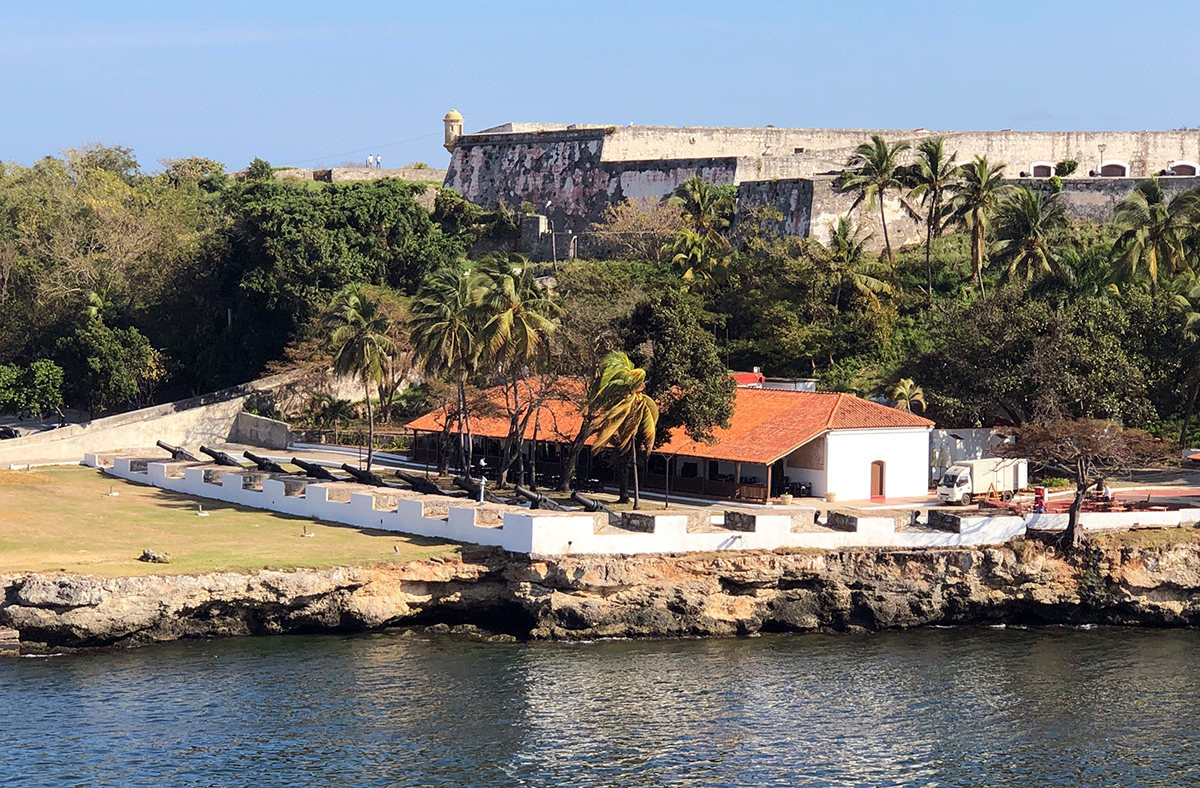
Morro Castle in the distance, as seen from Havana bay.
Since 1959, Cuba has haunted the American imagination. America’s fixation on Cuba’s Communist government has led to many regrettable results: assassination attempts against Fidel Castro, leader of Cuba’s revolution; the Bay of Pigs fiasco; the Cuban Missile Crisis; and an endless economic embargo driven by a domino-theory fear that tiny Cuba would bring about communist revolutions throughout the hemisphere.
It wasn’t always so.
After gaining independence in 1898, Cuba had a close relationship with the United States: a protectorate until 1902, it remained politically and economically subordinate to the U.S. for decades. The U.S. intervened actively in the island’s politics, including supporting dictator Fulgencio Batista after World War II. In line with U.S. Cold War policy toward many Latin American countries, the capitalist dictator received support from the U.S. as a bulwark against communism.
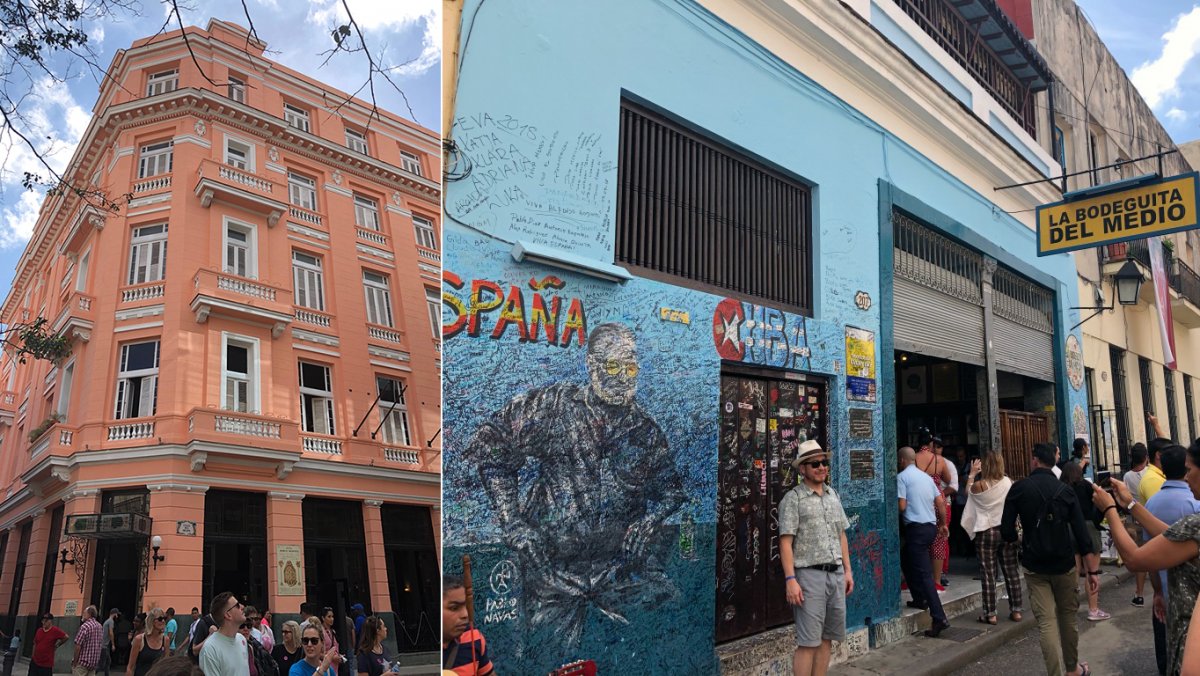
Hotel Ambos Mundos, where Ernest Hemingway lived in Havana (left); Hemingway's favorite Havana bar, which now bears a mural in his honor (right)
Initially built on exports of tobacco, sugar, and rum, the Cuban economy was deeply tied to foreign trade and U.S.-Cuban business thrived under Batista. During the Batista years, U.S. cars made their way to Cuba, American celebrities and dignitaries frequented the illustrious Tropicana club, and Americans acquired a taste for the Bacardi family’s rum. Writer Ernest Hemingway made a home in a Havana hotel, writing his prose with ambient city noise outside his window.
Fidel Castro and his brother, Raul, viewed this American presence as corrupt and repressive, and their revolution sought to elevate the common—especially rural—populace. Castro’s first attempt at revolution in July, 1954 resulted in failure and his exile to Mexico, where he met Ernesto “Che” Guevara. The Castro brothers and Che Guevara returned to Cuba for a second attempt and successfully overthrew Batista in January 1959.
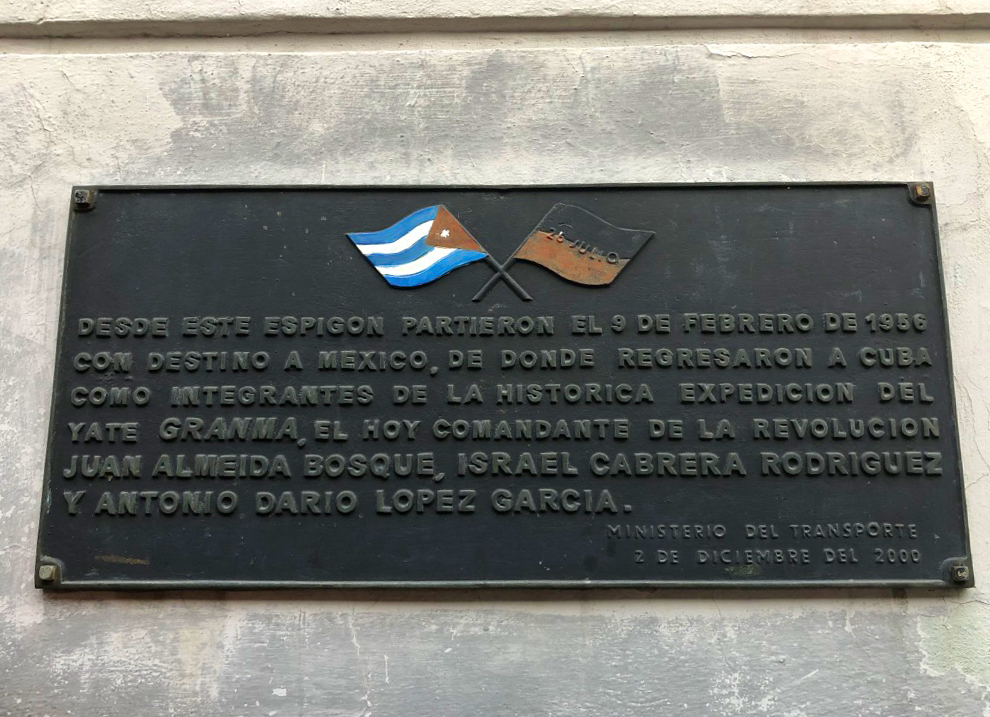
Plaque in Havana commemorating Fidel Castro's failed revolution, his exile to Mexico, and ultimate return to Cuba.
Initially wary of the new regime, the U.S.’s impression of Castro hardened when he took steps to nationalize U.S. corporations in Cuba, and drew the island into closer and closer alignment with the Soviet Union. As a result, the U.S. imposed a financial and economic embargo, blocking the import or export of almost all goods between the two countries.
This allegiance, and the U.S. trade embargo, caused Cuba to become what many tourism brochures now market as “a land lost in time.”
The Castro government implemented its socialist vision on an island cut off from any new American products. The Kennedys no longer visited the Tropicana, the 1950s Ford Fairlane would be one of the last U.S. cars imported to the island, and some of the more prominent private business leaders fled the country.
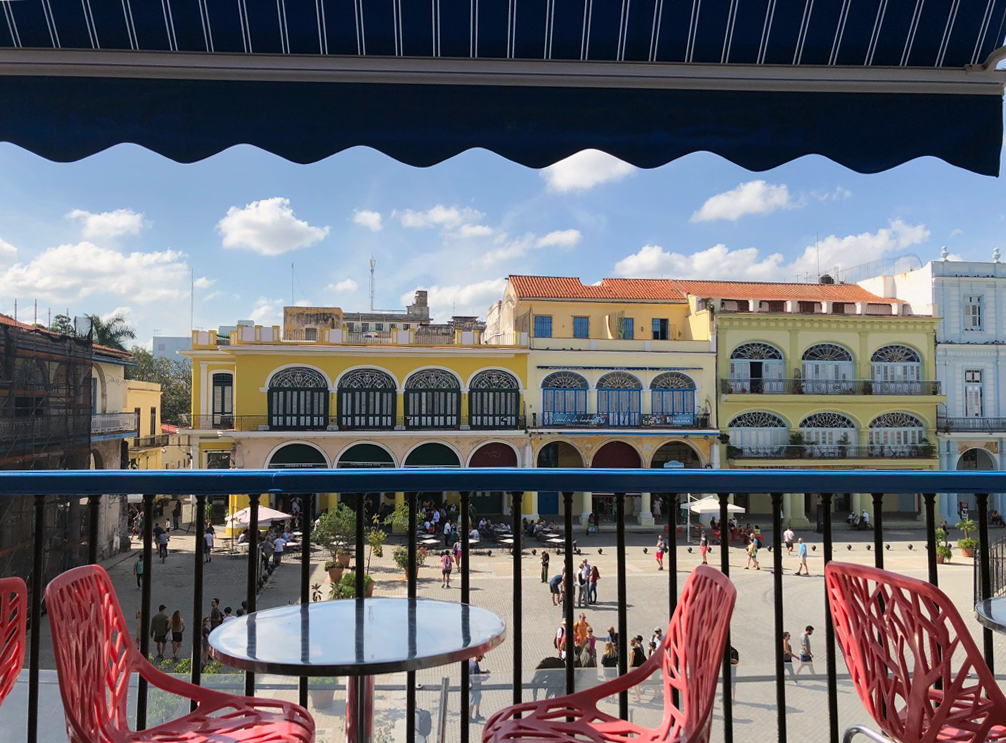
A restaurant in Business Plaza, Havana.
Under the embargo, the Castro government applied socialist ideology and developed a state-run economy in Cuba. Walking through Havana, one can still see the remnants of the revolutionary economy. Two kinds of restaurants exist in the city: government or family owned. Locals say that the best way to distinguish between the two types of establishments is to observe the patrons: if the majority of people are drinking and not eating, it is a government restaurant. Family-owned restaurants are much more popular for dining.
Today, the weathered cobblestone streets of Old Havana display a fascinating blend of Cold War and modern urban culture. The Cuban government has used the profits of the tourism industry, which has boomed since 1994, to rebuild and restore buildings and plazas throughout the city, a markedly successful funding stream for urban renewal.
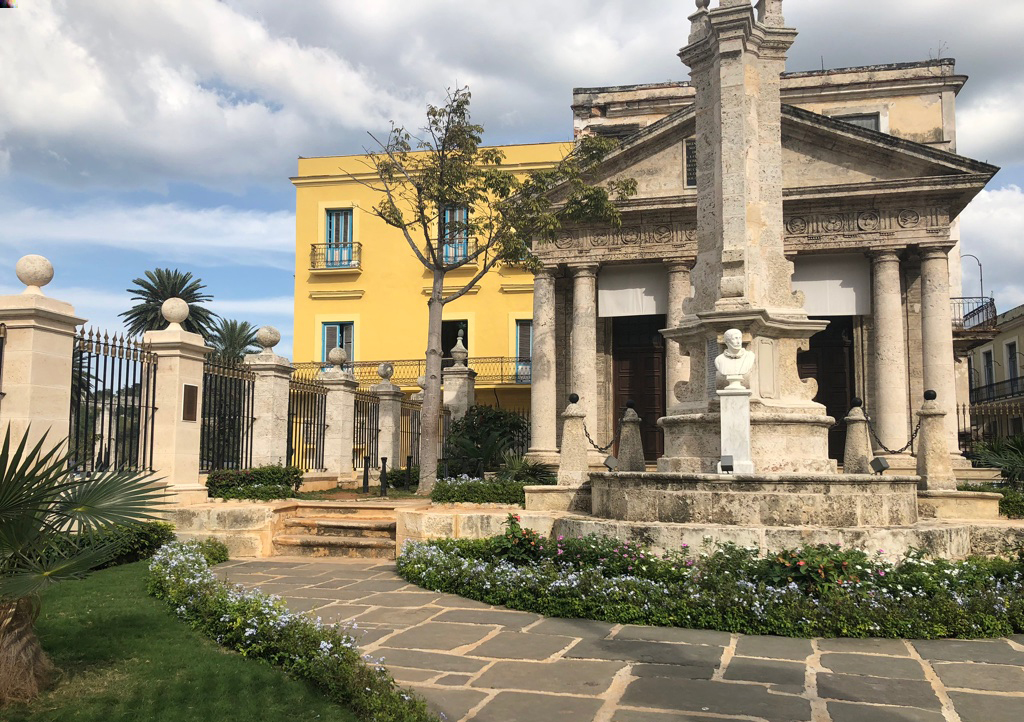
Governor's Plaza, Havana.
Governor’s Plaza is situated next to a large fort on the channel leading into the bay. Famous hotels now frequented by celebrity guests sit across from the mansion where the Spanish governor and his family lived prior to Cuban independence. Statues of prominent Spanish leaders have since been moved from the center of the plaza to the side, but the remnants of Spanish colonialism are very present reminders of Cuba’s history.
Havana’s Catholic churches are both symbols and tools of what imperial Spain considered its perceived divine mission of colonization. As the Spanish built Havana, they brought Catholicism with them and were careful to incorporate Catholic churches and cathedrals in abundance. “Cathedral Plaza” is bounded entirely on one side by an enormous cathedral.
Catholicism blended with African spirituality and the practice of Santeria that arrived in Cuba with the African slave population and became widespread on the island.
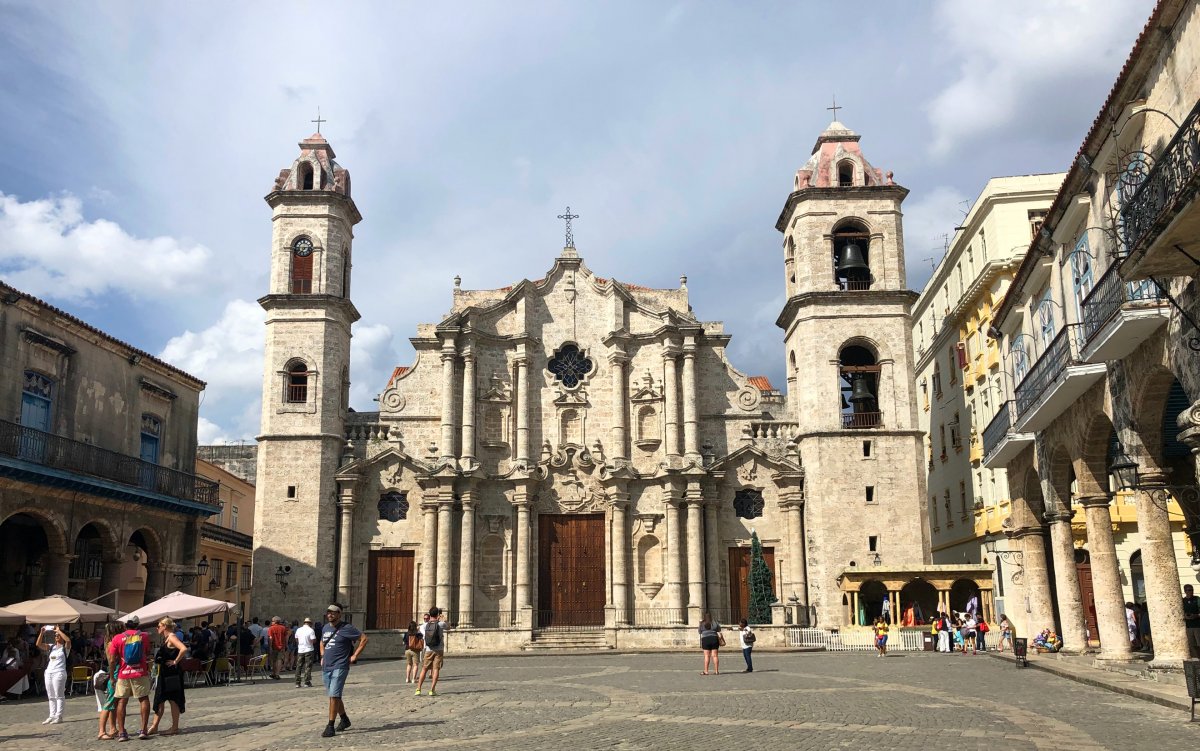
Cathedral Plaza, Havana.
The Cuban Revolution transformed the island’s religious practices. Communism was officially atheistic and many Catholic churches were vacated. Today, some of these grand cathedrals are used for musical performances and concert spaces because of their excellent acoustics.
During the Cold War, U.S. perspectives and education on Cuba vilified the nation for its communist policies. The generation that grew up during the height of the Cold War—especially those who lived and fought through the Korean and Vietnam Wars—looked with hostility at Havana, a hostility that remains.
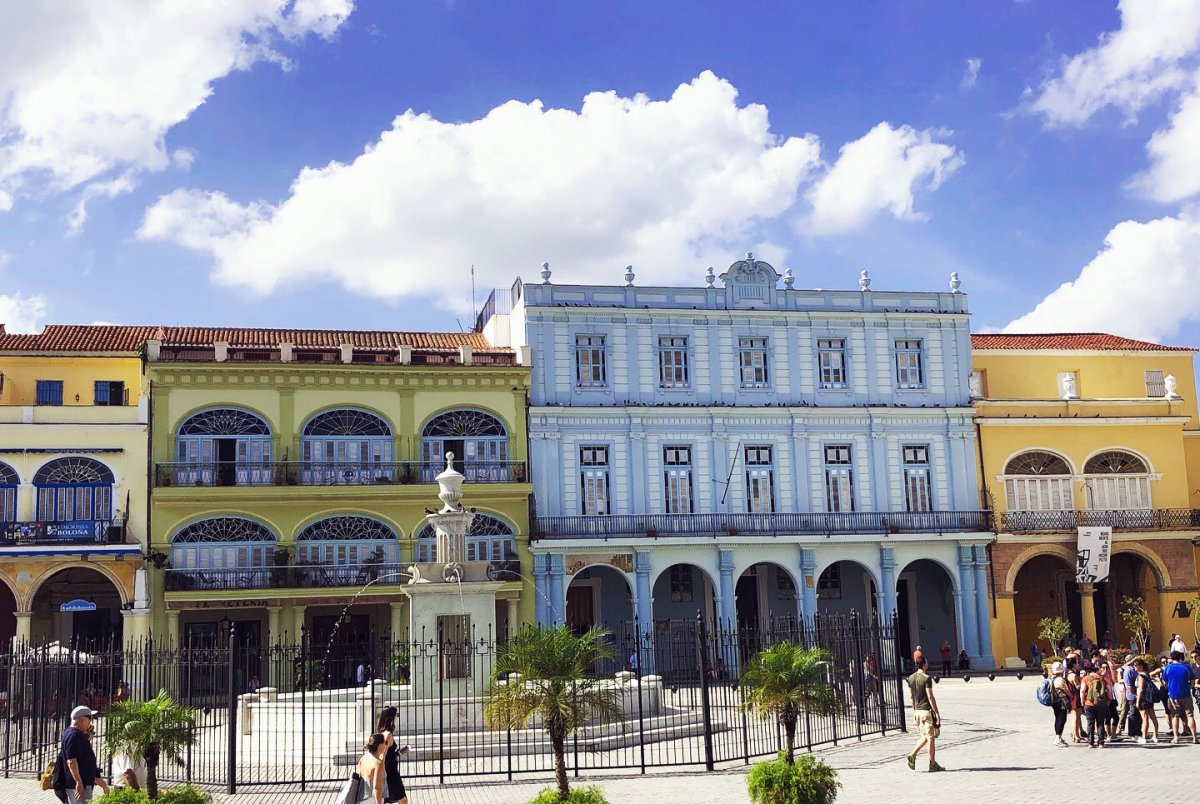
One of Havana's plazas without a church.
In contrast with Baby Boomers, Millennials and Gen X’ers now happily sport t-shirts bearing the likeness of revolutionary Che Guevara. The substantial difference in generational opinion highlights the effect of the slow rehabilitation of the U.S.-Cuba relationship and its future potential.
At the end of the day, Havana is beautiful—a combination of cultures with a complicated history and resilient people. Now that U.S. citizens have more freedom to travel to Cuba, we can begin to understand our neighbors rather than vilify what we do not know.
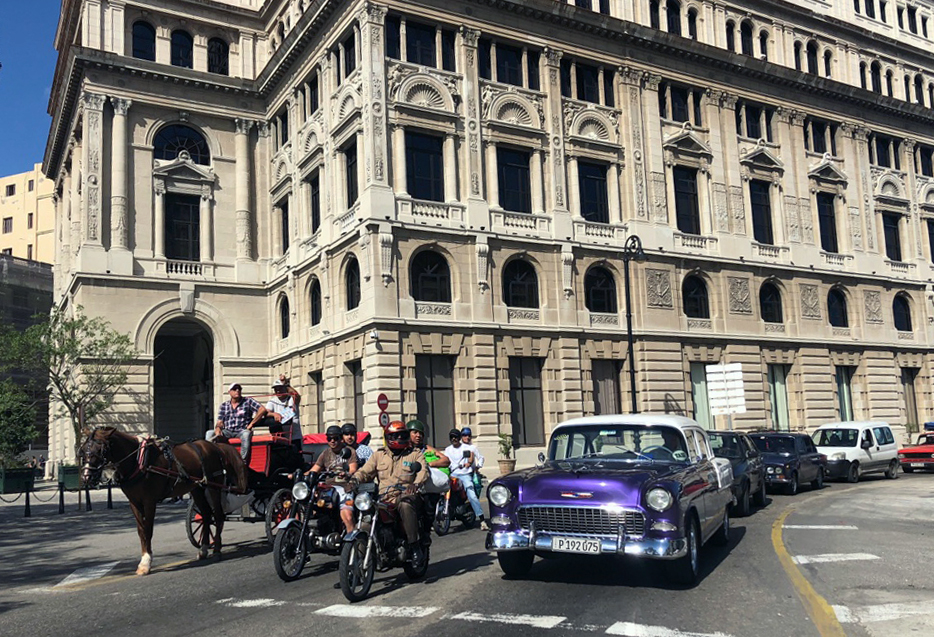
Past and present coexist in Havana, as motorcycles and 1950s cars share the streets with horse-drawn carts.
[All photos by Amanda Lawson, 2019]
